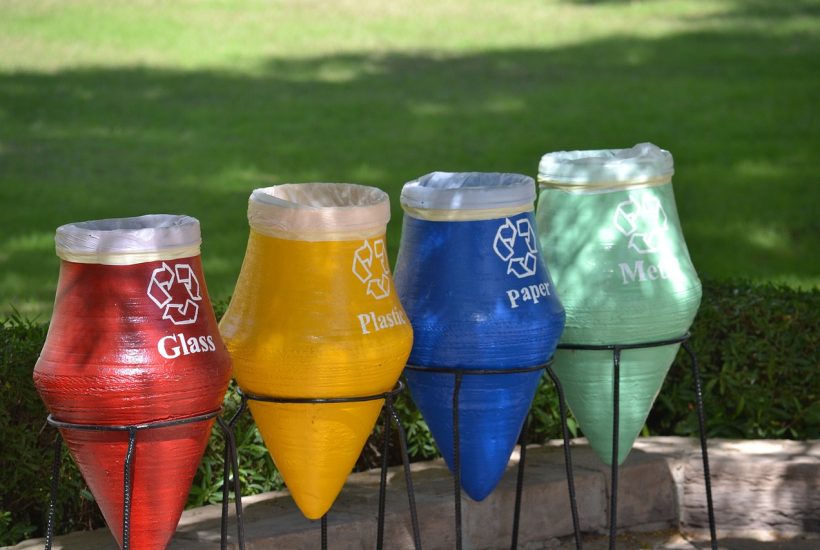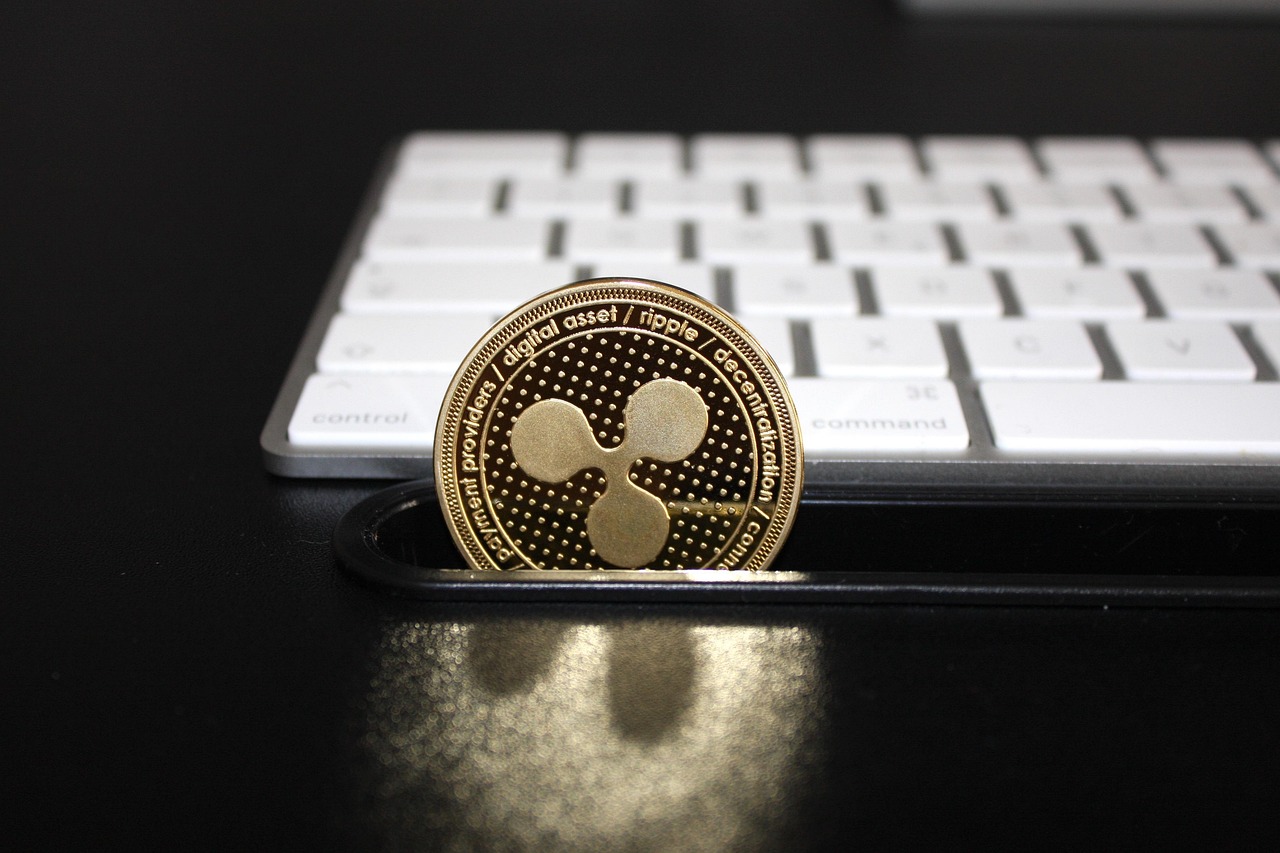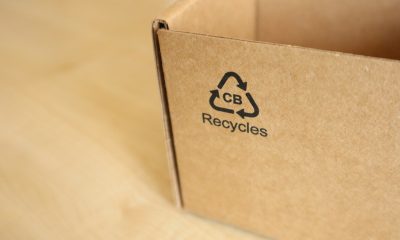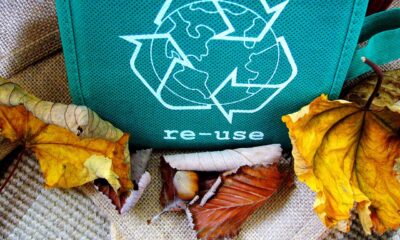Featured
Circular Economy in Italy Places the Country in Top Five in the EU
Italy still wastes a large proportion of materials extracted from ecosystems when it should focus on sourcing raw materials internally. In this sense, the NRP has set two general objectives: to make the recycling chain perform well with interventions aimed at enabling the recovery of secondary raw materials and to reduce the use of raw materials that the country lacks.

There is a lot of talk about the circular economy, but where does Italy stand? Although there is still a long way to go, the Peninsula asserts itself in the top five countries in the European Union that pay the most attention to recycling. According to circularity indicators, in fact, Italy earns the pole position together with France (followed by: Spain, Germany, and Poland), while the percentage of recycling of all waste has reached almost 68 percent: the highest figure in the European Union.
The findings emerge from the latest National Report on the Circular Economy in Italy 2022, now in its fourth edition. The study, carried out by CEN (Circular Economy Network) together with a group of companies and business associations, in collaboration with Enea, shows that, in 2020, the rate of utilization of material from recycling in the EU was 12.8 percent, while in Italy it reached 21.6 percent, second to that of France (22.2 percent) and more than eight percentage points higher than that of Germany (13.4 percent); followed by Spain (11.2 percent) and Poland (9.9 percent).
Read more about the circular economy in Italy and fidn the most important business headlines of the day with the Born2Invest mobile app.
The circularity rate in Italy
Although the data emerging from the Report are encouraging, there is still a long way to go. In particular, Italy suffers, above all, in three areas: land consumption, eco-innovation, and asset repair. According to the Report, between 2018 and 2020, the circularity rate dropped from 9.1 percent to 8.6 percent while in the last five years consumption has grown by more than 8 percent (surpassing 100 billion tons of raw material used in a year), compared to an increase in reuse of just 3 percent (from 8.4 to 8.65 billion tons).
Italy still wastes a large proportion of materials extracted from ecosystems when it should focus on sourcing raw materials internally. In this sense, the NRP has set two general objectives: to make the recycling chain perform well with interventions aimed at enabling the recovery of secondary raw materials and to reduce the use of raw materials that the country lacks, replacing them, progressively, with secondary raw materials. But is this sufficient? Edo Ronchi, former environment minister and president of the Sustainable Development Foundation, explained the situation in Italy.
Italy’s circular economy scenario
“With the publication of the National Strategy for the Circular Economy we have a framework that covers producers, consumption patterns, and waste. For products, the circularity criteria are well known: they concern durability, reparability, and reusability; recycling and the content of recycled material replacing the raw materials that compose it. The amount of recycled materials depends very much on the supply chains. In Europe, we are well placed, with an amount that fluctuates around 20 percent, but steel, which is composed of more than 70 percent scrap, weighs heavily,” explained former Minister Ronchi.
“As for colored glass, we are at high levels, with more than 70 percent recycled. We also notice the good performance of recycled material in paper, around 30 percent, while on plastics we are still low. A higher percentage is seen in the recycling of polyethylene bottles and wooden furniture. For example, particleboard is one of the big raw materials for furniture construction in Italy. In recycled aggregates, we denote a large amount on low-quality ones, while in high-quality ones we are at low levels. In textiles, production is complicated; we recycle mostly wool and cotton and in man-made fibers but the percentage remains very low, and on the reparability of products we are low at the European level even though we are trying to reverse course. On disposable products, reuse of furniture and machinery, and mechanics in a circular perspective there is a lot to be done by also looking in the direction of the industrial symbiosis of by-products-when a waste from one process enters another production process. It is going better in consumption patterns; in mobility, sharing is the sector that is driving it, although the shared use of household appliances and company cars is less widespread in Italy, while the intensified use of bicycles and mopeds is spreading especially in large cities. As for agriculture, the Italian regenerative model is quite advanced, although there are problems at farms with effluent, much of which is recycled, and liquids that have yet to be recovered. In reuse and use in production processes, we are European leaders a little bit in all sectors, with room for improvement, but in the recycling of electronic components we are behind.”
“In reuse and use in manufacturing processes we are European leaders, but in electronics recycling we lag behind”
Italian startups’ commitment to circularity
“Startups bring innovative ideas on the circular model with, for example, platforms on industrial symbiosis. Some are useful to identify repairable products, others are used to revalorize circuits of use, others leverage the most recyclable products and some replace them,” said the former minister. “Also important is the recovery of wine-making waste for use in cosmetics, again from a circular perspective as well as aromatic plants, which produce active ingredients that can be used for drugs as a regenerative model. It is a general model that requires continuous innovation. Usually, the ideas are good there, but there is difficulty in raising funding for industrialization and project development, and communication. Sometimes, startups have to give up their autonomy to sell the idea. There are few government incentives while Enterprise 4.0 funds with tax credits and credit access opportunities offer good possibilities.”
__
(Featured image by imordaf via Pixabay)
DISCLAIMER: This article was written by a third party contributor and does not reflect the opinion of Born2Invest, its management, staff or its associates. Please review our disclaimer for more information.
This article may include forward-looking statements. These forward-looking statements generally are identified by the words “believe,” “project,” “estimate,” “become,” “plan,” “will,” and similar expressions. These forward-looking statements involve known and unknown risks as well as uncertainties, including those discussed in the following cautionary statements and elsewhere in this article and on this site. Although the Company may believe that its expectations are based on reasonable assumptions, the actual results that the Company may achieve may differ materially from any forward-looking statements, which reflect the opinions of the management of the Company only as of the date hereof. Additionally, please make sure to read these important disclosures.
First published in StartupItalia, a third-party contributor translated and adapted the article from the original. In case of discrepancy, the original will prevail.
Although we made reasonable efforts to provide accurate translations, some parts may be incorrect. Born2Invest assumes no responsibility for errors, omissions or ambiguities in the translations provided on this website. Any person or entity relying on translated content does so at their own risk. Born2Invest is not responsible for losses caused by such reliance on the accuracy or reliability of translated information. If you wish to report an error or inaccuracy in the translation, we encourage you to contact us.

-

 Crypto5 days ago
Crypto5 days agoRipple in 2025: Legal Victory, RLUSD Growth, and XRP’s Uncertain Future
-

 Crypto2 weeks ago
Crypto2 weeks agoCrypto Markets Slide as Bitcoin Breaks $90K, Year-End Pessimism Grows
-

 Impact Investing1 week ago
Impact Investing1 week agoTreeblock Showcases Sustainability Solutions at ADIPEC Abu Dhabi
-

 Impact Investing5 days ago
Impact Investing5 days agoHigh Awareness, Low Adoption: The VSME Challenge for European SMEs

























